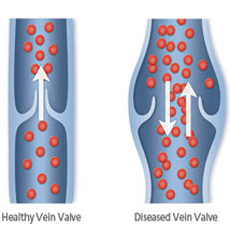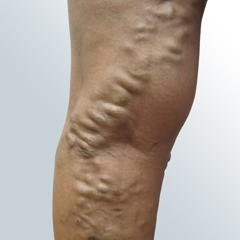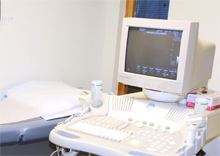

What are varicose veins?
aricose veins are veins that have become enlarged due to incompetence of the vein valves, which normally work to prevent blood from flowing backwards. Your legs are made up of a network of veins. Healthy leg veins contain valves that open and close to assist the return of blood back to the heart. If the valves in veins fail, gravity keeps blood from flowing back to the heart efficiently. This produces a back-up, or congestion, of blood. As a result, pressure builds up and the diseased veins become enlarged, eventually bulging to the skin's surface. This pooling of blood in the leg veins can lead to symptoms such as pain, swelling, leg heaviness and fatigue, and skin ulcers.
When larger veins fail, they are typically called varicose veins.
When smaller veins are affected, they are typically called spider veins.
Untreated varicose veins can lead to other serious complications like ulcers or blood clots.

What causes varicose veins?
The presence of varicose veins is influenced by a variety of factors, including:
- age
- gender
- family history (Heredity is the number one contributing factor causing varicose and spider veins!)
- heavy lifting
- multiple pregnancies
- obesity
- professions with prolonged standing/sitting
Women are more likely to suffer from abnormal leg veins, since females usually have multiple risk factors.
About three fourths of the persons who have varicose veins are women and 25% are men

How are varicose veins diagnosed?
Initially, a diagnostic ultrasound exam will be performed to determine the cause and severity of the vein problem, and to decide which treatment option is best for you. This exam is specifically referred to as the venous duplex examination, and allows the physician to see the anatomy and check the flow characteristics of veins beneath the skin. The information is then used to diagnose the specific vein issue and to plan and guide treatment accordingly.
How can varicose veins be treated?
There are two general treatment options: conservative measures like compression stockings and herbal treatments; or corrective measures, such as sclerotherapy, endovenous radiofrequency ablation, laser/light source treatment, or surgery. In most cases, a combination of treatment methods is recommended.
Click here to read more about varicose vein treatments